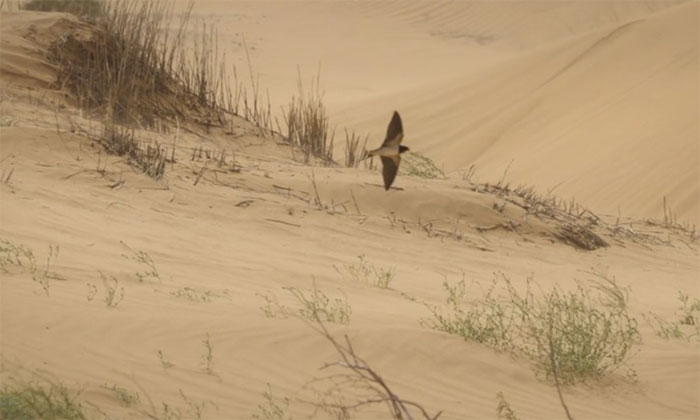Special footage reveals the fight for survival of a tiny white-bellied tern inside a giant sandstorm while migrating across the Sahara desert.
Each year, the European white-bellied tern ( Hirundo rustica rustica ) migrates 9,700 km from northern Europe to southern Africa, then flies back. New clip from National Geographic’s “Incredible Animal Journeys” shows a lone tern on a dangerous flight across the vast desert.
“Swallows are very fast and agile, so finding a small bird the size of a hand in a desert nearly the size of the United States is always a challenge,” Sarah Gibbs, the show’s executive producer, shared. “Filming such a bird in a sandstorm with a long lens, constantly buffeted by strong winds, increases the difficulty”.
The production team discovered the tern in Morocco at the northern edge of the Sahara desert. This is the point where the tern completed its journey across the desert, after spending several days in scorching temperatures without water. A scientist studying migration behavior each year supports the production team.
 White-bellied tern overcomes desert sandstorm.
White-bellied tern overcomes desert sandstorm.
The white-bellied tern weighs 17 – 20 g and is about 15 cm long. When the sandstorm hits, the wind speed reaches 64 km/h. The production team focusing on the tern really struggled. It was tossed about like a boat in the middle of the sea. Just by blinking, they could have missed the moment the bird sought shelter in the bushes, waiting for the storm to pass.
European white-bellied terns migrate north in spring to mate and raise their young, then return south as temperatures begin to drop before winter. The migration journey is fraught with danger with a high death rate each year. The Sahara Desert is one of the deadliest spots on the journey. According to Gibbs, it takes a tern 5 days to cross the desert without a drop of water in its stomach.

After crossing the desert, the tern flew to the water source and drank for the first time in many days. From there, it still has to fly another 3,200 km to reunite with its mate, then begin the cycle again.






